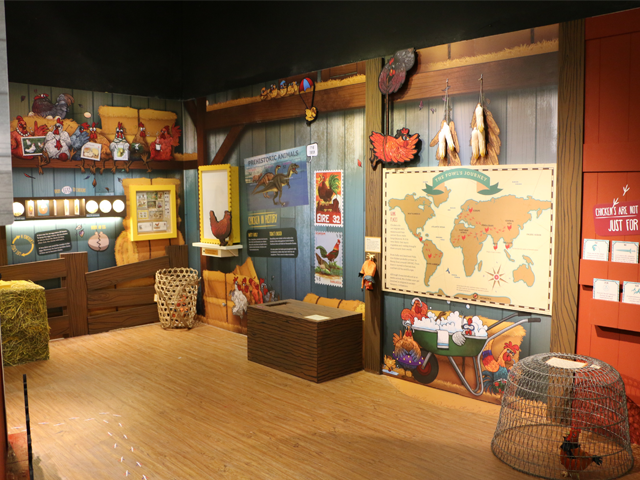Lunar New Year is a special and joyous time of celebration.
Tonight, across Singapore, Chinese families are enjoying reunion dinners with loved ones.
In the coming days, we will visit one another's homes to exchange New Year greetings.
Over delectable snacks and yusheng, we will catch up with family and friends, especially those we have not seen for a while.
Many non-Chinese too join the festivities, visiting Chinese friends and enjoying the holiday.
Even as the years go by and the world changes, we keep alive these traditions, handed down to us through the generations.
They remind us of what is truly important in life.
What matters is not what we have, but whom we have beside us on life's journey.
New Year is also a time for thanksgiving and reflection.
We give thanks for the blessings big and small that we experienced this year, whether it is an extra red packet for a new addition to the family, or Ah Boy coming home to reunion dinner with a shaved head, or Uncle's new job.
We also take a longer look back, to remind ourselves how far our nation has come and what we owe to earlier generations.
Recently, I made pre-New Year visits to the wet markets in Teck Ghee, meeting residents and catching up with the stallholders, many of whom I have known for years.
We remark to each other that we are all growing old.
When we first went to Ang Mo Kio in the early 1980s, it was a brand new town, and we were young adults, starting out on life's journey.
Now, our children have grown up and we are proud of them.
They are striking out on their own, starting their own families, enjoying many more opportunities than their parents.
The days are long, but the years are short.
While we reminisce, we also look forward, to plan ahead and envision what we will do this year.
Because each New Year is renewal.
Many of us have spent the last few days "spring-cleaning" - sweeping away bad luck to ready our homes for good luck.
This emphasis on renewal is even sharper in this Year of the Rooster, whose crowing signals a fresh dawn.
For young couples, renewal means making a serious life decision to start a family and have children.
The Government is doing all we can to help families do this.
We have substantially expanded preschool, childcare and infant care places.
We are providing more affordable and good kindergartens.
We are shortening waiting times for HDB flats, so couples can set up home and start families sooner.
I hope that the New Year brings with it the lusty cries of many more newborn babies!
One important area of renewal for us all is the economy.
In Singapore, we have always grown by renewing ourselves, taking our economy in fresh directions, opening new markets and fields of business.
That is how we have stayed relevant to the world, vibrant and prosperous.
That is what we must do again now, at this moment when there is such uncertainty in the global environment.
The Committee for the Future Economy (CFE), led by Heng Swee Keat and S. Iswaran, has been working on this for the past year.
It will deliver its report soon, setting out strategies for growth in the next 10 to 15 years.
It will identify new and promising industries and sectors, and plans to ensure that our children and grandchildren will enjoy many opportunities when they enter the workforce.
The Budget will follow up with concrete measures to implement the CFE proposals.
The Budget will also respond to our more immediate economic needs.
Last year, growth was sluggish, although it picked up towards the end of the year.
I hope the pickup will continue through this year.
Economic restructuring is hard work for both businesses and workers.
We know this from experience.
It is not easy for workers to learn new ways to do things or to switch jobs.
Neither is it easy for businesses to change the way they work, or develop innovative products and new markets.
But we have to persevere with upgrading, because it is the only way to improve the lives of Singaporeans.
I am confident we can succeed.
We have done it before, and we have the wherewithal to do it again.
Here in Singapore, we tackle our challenges together.
Government, businesses and workers all play their part, coming together to plan ahead, support one another and seize new opportunities.
This is how our children and their children can dream bigger dreams than us, and live better lives than ours.
It has been so for every generation.
Two weeks ago, I presented an Edusave Merit Bursary to nine-year-old Adam Zafran.
When I met his father, Aziz bin Ahmad, I had a wonderful surprise.
Aziz had brought an old photo of me presenting him a bursary award in 1986, 31 years ago!
The bursary helped Aziz and his family back then.
Now he is doing well, and his son is following in his footsteps, studying hard and doing well in school.
There are many more stories like this one.
Together, they make up our Singapore story, each generation works hard to build a better Singapore for our children.
The New Year is about our future.
Ultimately, it is the future of our children and our loved ones that drives us to give of our best.
Let us approach this Year of the Rooster with renewed determination, vigour and hope, to build our future together.
I wish all Singaporeans a Very Happy Lunar New Year!
![]()
This article was first published on January 27, 2017.
Get a copy of The Straits Times or go to straitstimes.com for more stories.

























































































































































































